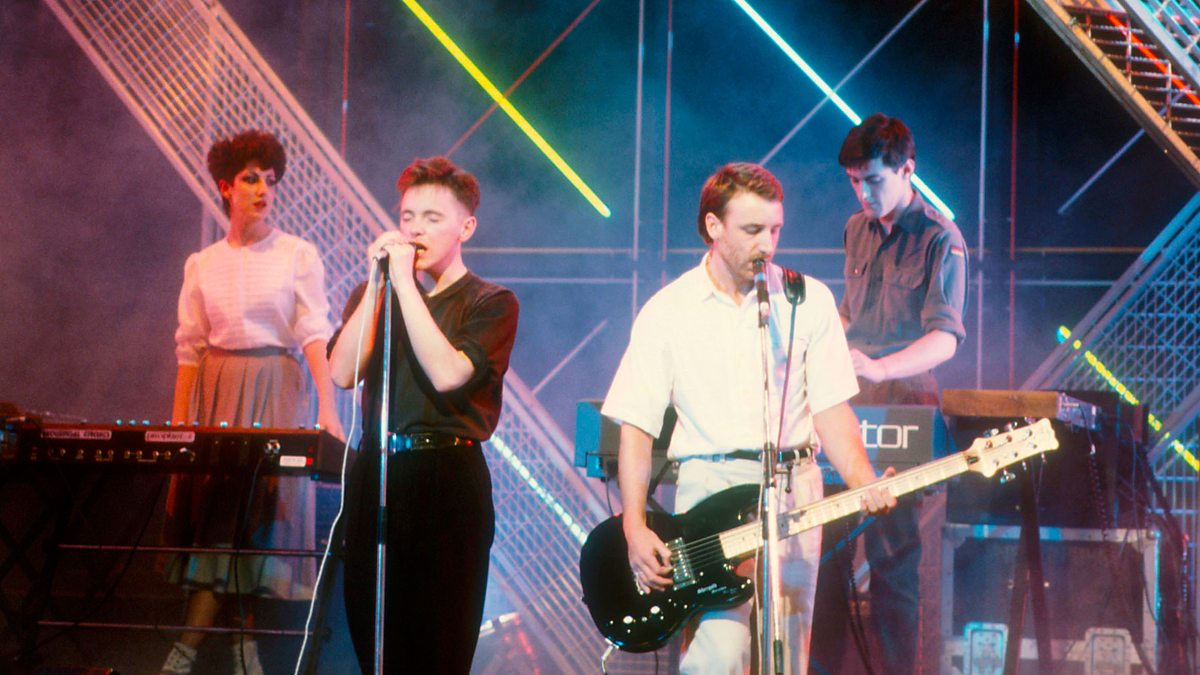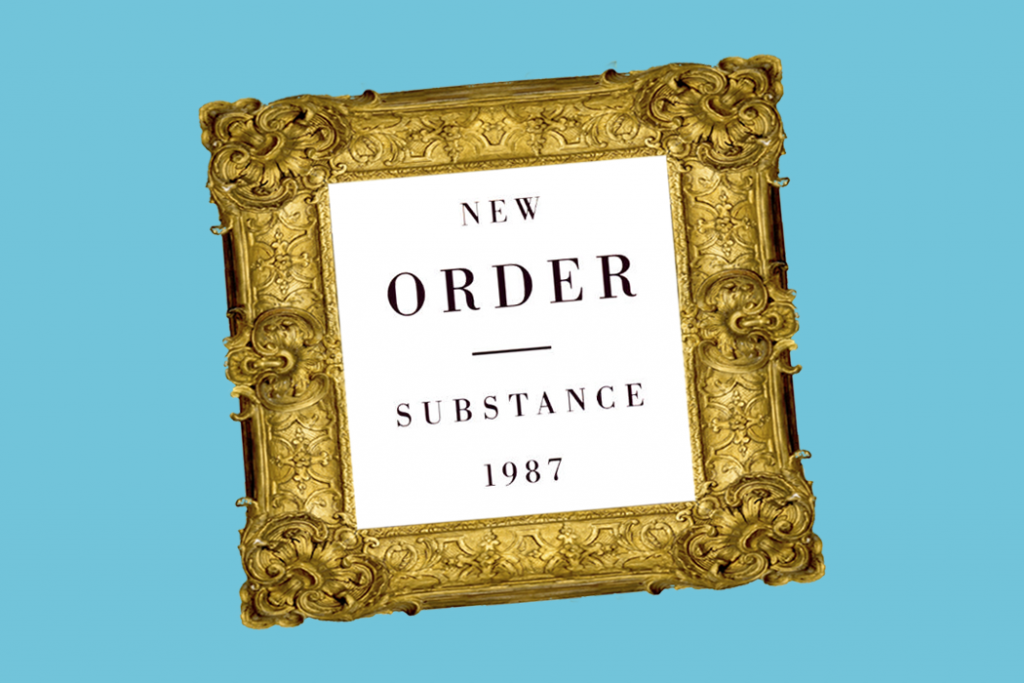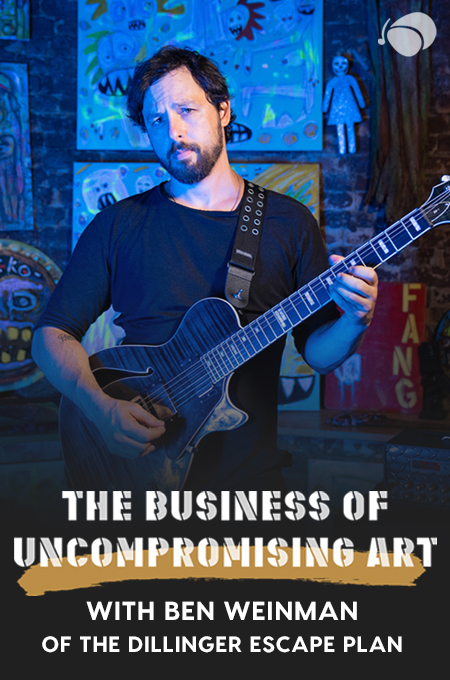
+ Welcome to Soundfly! We help curious musicians meet their goals with creative online courses. Whatever you want to learn, whenever you need to learn it. Subscribe now to start learning on the ’Fly.
Welcome back to our new series on Flypaper, Album Histories Monthly, which brings you the story of a single album each month, in the month that it was originally released. Last month, we covered New York Dolls’ eponymous debut album. This month:
New Order – Substance 1987
Release Date: August 15, 1987
“It started as an experiment. We were just getting into synths and things.” – Gillian Gilbert (synth, guitar)
New Order is a “what if” band. No one could have predicted that Ian Curtis’ tragic suicide would drive the remaining members of Joy Division to make some of the most popular and influential music of the 20th century. What if Curtis hadn’t killed himself? Would his bandmates and friends, perhaps including himself, have ever made this truly game-changing music?
Curtis’ death devastated the band. “On Sunday morning, I was turning my trousers up. Monday, I was screaming,” remembers the band’s drummer, Stephen Morris. But they persevered.
On the surface, Joy Division seemed like a reflection of Ian Curtis’ mind alone. Bernard Sumner (lead vocals, guitar) said that, “Joy Division created great slabs of black, neogothic” music. The crushing lyrics and Curtis’ baritone howl defined the band. But under the surface, there was a whole world of swirling synths, dancey disco-inspired beats, and melodic bass lines brewing that would soon come to define the new direction of New Order.
The one constant between the two bands was their emphasis on tone. In 1983, Rolling Stone wrote, “Like uncluttered landscapes in dark colors, New Order’s music remains more mood than melody.” Both bands had the uncanny ability to make a listener want to cry and dance in a single musical moment.
“Joy Division doesn’t exist anymore, and it would be foolish to kid people into believing it does.” – Stephen Morris (drums)
Vocal duties fell to Bernard Sumner who was initially reluctant to sing. He hadn’t been the obvious choice to take over from Ian Curtis, and he didn’t really like doing it much — he’d been happy to play his guitar standing stage right with his head down, the prototypical shoegazer (Buskin).
Gillian Gilbert, Morris’ girlfriend, was recruited to play synth for the group. She claims she was recruited because she could play “Jingle Bells” on the piano. With a finalized lineup of Gillian Gilbert, Stephen Morris, Peter Hook, and Bernard Sumner, New Order was poised to make some of the most popular and critically acclaimed music of the ’80s.
New Order released a handful of albums throughout the ’80s attempting to solidify their sound, which at first bared striking similarities to the morose, melodic songs of Joy Division. Their first single, “Ceremony,” was well received, reaching #34 on the charts in England. More singles followed that began the band’s crossover to dance music, such as “Confusion,” “Temptation,” “Everything’s Gone Green,” and what would become one of the best-selling singles of all time, “Blue Monday.”
Then, they made Substance 1987. This was set up like a “Best Of” compilation, but it included the lengthier, 12″-club versions of their singles, all of the collected b-sides, and even a newly recorded single, and it was issued on the new, longer-playing CD format for the first time.
Because this collection charted the progression of the band’s sound and featured longer, remixed versions of their songs, Substance 1987 was the perfect mix of New Order’s post-punk influences and dance style. It was their own twist on a career retrospective. Robert Christgau wrote in The Village Voice that their album was a “pure rhythm machine with an ironically mysterious overlay of schlocky melody to help it go down. This album is a case study in sensationalist art, and I say the world is better for it.”
+ Learn more on Soundfly: Create more powerful, emotional experiences in your music with a simple understanding of harmonic theory. Our new mentor-driven course, Unlocking the Emotional Power of Chords, can help you get there quicker!

It was a master class in reimagining their own music. They had remixed “Blue Monday,” “Perfect Kiss,” “Shellshock,” “Confusion,” “Bizarre Love Triangle,” added a dozen b-sides as a bonus, and recorded the new song, “True Faith.” It was a smash hit that was given an A by The Village Voice at its time of release and continues to be critically lauded today, earning perfect scores from AllMusic, Blender, The Rolling Stone Album Guide, Select, Spin Alternative Guide, and Sputnik Music, just to name a few.
“When I was a very small boy / Very small boys talked to me / Now that we’ve grown up together / They’re afraid of what they see” — New Order, “True Faith”
New Order strived to break into the American mainstream ever since Ian Curtis killed himself days before Joy Division was going to leave for their first North American tour. While they had found marginal and critical success in the US, breaking through to a wider audience eluded them.
They decided to hire Stephen Hague to produce their new single. It was a prudent choice for a Manchester band looking to break through to American pop audiences. By this point, he had already produced a wide range of American music, including Dolly Parton, Gordon Lightfoot, and Suicide. He was also familiar with the British electronic scene, having produced “West End Girls” by Pet Shop Boys a few years earlier.
New Order wanted to write a song that would blow audiences away when they played it live. Some of their earliest performances in America were marred by a lackluster response from the crowd. New Order had to balance their highly electronic sound along with writing music that would sound good live. They relied heavily on samples, vocoding effects, and multi-layered keyboard parts.
Typically, New Order made use of a wide range of gear for recording, but while recording “True Faith,” they decided to focus predominantly on instruments they would be playing live.
+ Learn more on Soundfly: Expand your low-end sonic palette by learning the ropes of synth bass setup and performance in the free course Synth Bass for Bass Players.
When the band commenced working with Hague in the studio, they brought an interesting array of electronic gear in with them: a Yamaha QX1 sequencer, a rack-mounted Octave Voyetra 8 polyphonic synthesizer, a Yamaha DX5 that provided most of the bass sounds and which Hague succinctly describes as “Yamaha’s attempt to put two DX7s under one roof — it weighed a ton,” and an Akai S900 sampler. “It was the very early days for samplers,” Hague recalls, “and the band didn’t have many sounds for it yet. In fact, I think they brought it down mostly hoping they could steal some sounds from me… which they did” (Buskin).
MIDI programming allowed for bass lines, synth lines, arpeggios, and drums to be programmed accurately to a grid. This gave their instrumentation its trademark robotic feel. Everything would be aligned to a universal tempo. Playing around with MIDI sampling has become industry standard for dance and electronic music. In 1987, however, it was in its infancy.
Hague commented in a later interview that, “It was also around this time that MIDI started to get a foothold. A couple of years earlier, when I worked on ‘West End Girls,’ MIDI was just starting to be written about, and there were only a few devices around, and they didn’t really have anything to plug into yet. But by the time we made ‘True Faith,’ MIDI was obviously the way everything was going.”
Bernard Sumner’s languid vocals were a hallmark of New Order’s sound. He had a very laid-back and “non-professional” singing style, which made a lasting impression on their fans. He recorded his vocals typically in the control room using a handheld microphone. He preferred this to recording in a vocal booth. Stephen Hague said, “It was a very casual, low-pressure setup. He did a guide vocal, and there were some parts I really wanted to keep, so we stuck with the same mic and tried it on a stand, but he preferred to just hold it… Barney may not be a big crooner, but he has a natural sense of how he’s affecting his sound” (Buskin).
Peter Hook would purposely refuse to come up with anything specific to keep the “jamming spirit alive.” Again, Hague comments:
“Hooky would try a lot of ideas, really fearless, and often it was just him and me in the studio. Once we had the sound together it happened quite fast — we’d just pull a couple of chairs up to the desk, turn it up really loud and go into record from bar one. At first, I thought it would have been nice if he’d had some bits worked out before we started, but, like I said, this was the first time for us in the studio, and as the years went on and we did more work together I couldn’t wait ’til Hooky plugged in and just started to make shit up.”
Hague concluded, “We all left the studio really happy. It was just mission accomplished. There was no hand-wringing at all.”
“Never had pop sensibilities been so perfectly honed.” – Daryl Easlea, BBC
Substance 1987 was a smash hit. It redefined what a dance band could, and should, be. Robert Christgau wrote that “the secret of Bernard’s elementary vocals, Gillian Gilbert’s two-finger exercises, Peter Hook’s strummed bass, and the compressed physicality of Steve Morris’s drums was never virtuosity — it was conception, timing, rapport, devotional concentration.” New Order was amateurish and masterful, punk and electronic, dancey and morose, and people loved it.
They were one of the first bands to capitalize on remixing their own material. It was a huge financial success. Christgau continued his review, “Cultists miss the murk of the early mixes, but I prefer them hyped and speeded up.”
Even in 2017, New Order remains a relevant band. They closed out the Mojave tent at Coachella this year and Rolling Stone writer Brad Auerbach said they were “one of the highlights of his weekend.”
Want to get all of Soundfly’s premium online courses for a low monthly cost?
Subscribe to get unlimited access to all of our course content, an invitation to join our members-only Slack community forum, exclusive perks from partner brands, and massive discounts on personalized mentor sessions for guided learning. Learn what you want, whenever you want, with total freedom.
—
Bibliography
Aurbach, Brad. “Coachella 2017 – Complete Coverage.”Entertainment Today. N.p., 27 Apr. 2017. Web.
Buskin, Richard. “CLASSIC TRACKS: New Order ‘True Faith’.” CLASSIC TRACKS: New Order ‘True Faith’. Sound on Sound, 01 Aug. 2017. Web.
Christgau, Robert. “Robert Christgau: Consumer Guide Dec. 1, 1987.” >Robert Christgau: Dean of American Rock Critics. Village Voice, n.d. Web.
Grant, Steven, and Ira Robbins. “New Order.” Trouser Press. N.p., 2007. Web.
“New Order – Snub TV – Interview – 89.” Interview. YouTube, 23 Apr. 2012. Web.
New Order Interview 1987. YouTube. N.p., 7 Jan. 2011. Web.
Schmidtt. “Rolling Stone’s Worst 500 Album Reviews of All Time.” RateYourMusic. N.p., 2007. Web.




